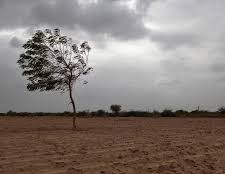NVI Correspondent
Srinagar, Jan 10(NVI) Jammu and Kashmir has endured its driest year in over four decades, with rainfall plummeting to just 870.9 mm in 2024, marking a significant 29% deficit from the average annual rainfall of 1232.3 mm.
This is the fifth consecutive year of below-normal precipitation, putting immense pressure on the region’s water resources and raising urgent concerns about its long-term sustainability.
The trend of decreasing rainfall over the past five years paints a troubling picture. Data available with then NVI suggests that in 2023, a 7% shortfall was recorded, followed by 16% in 2022, 28% in 2021, and 20% in 2020. With 2024 figures approaching the region’s historic low of 802.5 mm recorded in 1974, experts warn that climate vulnerability in the region is on the rise.
Monthly data further highlights the severity of the situation. January experienced a shocking 91% deficit, followed by 17% in February and 16% in March. While April saw a brief respite with a 48% surplus, the deficit resumed in May and continued to worsen. By the year’s end, October, November, and December faced extreme shortfalls of 74%, 69%, and 58%, respectively.
The impact of these consistent dry spells is already being felt across various sectors. Agriculture has suffered due to reduced water availability for irrigation, leading to concerns over crop yields. The hydropower sector, too, is grappling with lowered reservoir levels, diminishing its power generation capacity. Additionally, drinking water supply, particularly in rural and high-altitude areas, has become increasingly unreliable as groundwater levels deplete.
Experts are urging immediate action, highlighting the potential long-term consequences for the region’s economy, public health, and climate resilience. There is a growing call for comprehensive climate adaptation strategies, including water conservation, improved irrigation practices, and enhanced water management systems to mitigate the ongoing impact of these dry conditions.
As climate change continues to alter rainfall patterns, Jammu and Kashmir stands at a critical juncture. Without substantial investments in sustainable water management and infrastructure, the region could face even more severe drought conditions in the years ahead, threatening its economy and the livelihoods of its residents. (News Vibes of India)








